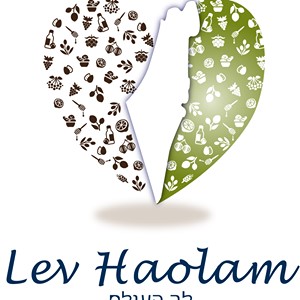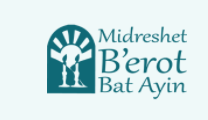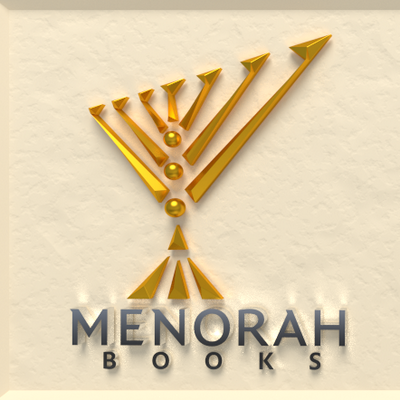
Dyeing with sea source natural dyes is very exciting to watch the process. The wool is dipped into the dye left for a few minutes, and then removed. At first the wool is pale yellow, but with exposure to air and sun, the colour gradually turns to green and then to teal blue which in hebrew is the word tekhelet. This change in colour never ceases to fascinate! You are probly by now are wondering what does this have to do with Frankincense. Well it was what came to my mind when I saw the process occur with my Blue Aquamarine Frankincense that I purchased for research purposes. I watched my oil change from yellowish pale color to a tekhelet blue or as it’s called a Aquamarine blue after it was exposed to light and was opened.
A little Background:
Recently there was a discovery by Dr. Robert Pappas founder of Essential Oils University. He discover there is a chemotype in Frankincense that was thought to be non existant.
Originally Robert Pappas did the distillation of this newly discovered resin of frankincense only in a stainless steel still and of course saw nothing special in terms of color. But when he did the distillation in his old faithful copper still the oil you see in the picture above is what resulted. Dr. Robert Pappas says “I truly have never in my 20 years of analyzing oils seen an oil with such a strikingly beautiful color and remind me of the Greek Island waters of the Mediterranean Sea. ”

Dr. Pappas goes on to say “Not only distilling the resin in copper give it the beautiful color but it also greatly improved the odor, even though the observable chemistry was exactly the same. The differences were obviously due to the copper interacting in two distinct ways. The amazing color is due to a very slight amount of copper ions complexing with the oil in a unique way because of the special chemistry that this oil exhibits that no other oil has, we’ve seen greenish color affects from copper in oils before, but never a color quite like this. The improved odor from the copper still is obviously from the copper destroying any of the very trace sulfur containing components that arise during distillation processes that can give an oil an off odor, especially when freshly distilled.”
What is most amazing the chemistry of this essential oil. This is a new chemotype of frankincense that Dr. Robert Pappas discovered that contained methoxy decane as its main component and that this component was thought not to exist in nature?
Methoxydecane types – Only in recent years has discovered this chemotype of frankincense, which in turn has raised even more questions about which species of resin we were actually getting. This chemotype seems to be the rarest of the commercially produced types, as there is not a single report in literature of an essential oil containing this component that we could find. In EOU experiments the methoxydecane type of oil appeared to them only twice in all of their lab distillations, once from a single lot of Boswellia frereana and the other time from a single lot of Boswellia carterii. Even though these resins are very different resins in terms of appearance, it was remarkable how similar their chemical profiles were, which left everyone wondering if the resins were actually from the same species and perhaps the drastic differences in the appearance of the resin are due to other environmental factors. In both cases the oil yield was about the same, around 2%. Then later he received samples from a commercial distillery who was also producing this chemotype of oil, from resin that was claimed to be only from carteri.

Now here the connection this is not just any color, but in Jewish tradition it is known as a very special meaningful color. In Hebrew it is called “tekhelet”. the type of blue was seen by Moshe Rabbeinu when he took the stones thet he hewned from the throne of G-d.
The foot of G-d’s Throne is made of a blue stone. In Exodus 24, Moses and the elders of Israel are invited up Mt Sinai to seal the covenant with G-d. They eat and drink. Moshe alone may approach G-d, but the elders get a glimpse of Him from afar.
Moshe and Aaron, Nadav and Abihu, and the seventy elders of Israel went up and saw the G-d of Israel. Under his feet was something like a pavement made of lapis lazuli, (sapphire) stone as bright blue as the sky and sea.
G-d cuts the commandments from His throne. In this setting, G-d presents the hard copy of the covenant Klal Yisrael ( Israelite) who have verbally committed to. G-d said to Moshe, “Come up to me on the mountain and stay here, and I will give you the tablets of stone with the commandments I have written for their instruction.”
The way the word stone and tablet are written in Hebrew leads the interpreters to believe that G-d is referring to a specific stone. And the only stone in this context is the blue stone of G-d’s throne. In Exodus 32, we learn G-d made the tablets and wrote on them Himself.
Then Moses turned and went down from the mountain with the two tablets of the testimony in his hand, tablets which were written on both sides; they were written on one side and the other. The tablets were G-d’s work, and the writing was G-d’s writing engraved on the tablets.
This G-dly handiwork also lends credence to the actual stone being of “G-dly” origin; the blue stone of His throne. *Ezekiel 1 also describes G-d’s throne being made of blue stone.
And so, we have the Law of G-d derived from the Throne of G-d. Ultimately, if we follow the path of these stone tablets, they reside under the earthly representation of G-d’s Throne: the Mercy Seat of the Ark of the Covenant. (For those who need particulars, Moses made the replacement copy of the 10 statements from the original stone. Now G-d said to Moses, “Cut out for yourself two stone tablets like the former ones, and I will write on the tablets the words that were on the former tablets which you shattered. Exodus 34:1) Interestingly, the temple was called the “footstool of G-d.” (Isaiah 66:1, Psalm 99:5, 1 Chronicles 28:2) This is a logical rendering, if the stone tablets were carved from the literal pavement under his throne. The Box which held the “pavement” rested in the Beis HaMikdash (the Holy Temple). Now let’s look other Jewish resources also.
In the Talmud Shabbat 104a says that the Tablets were made of Sapphire stone(Lapis Lazulli). Have you ever look at a Lapis Lazulli gem stone it has light green color to turquoise to dark blue shades. Also note the letters went through the stone of the commandments which was a miracle, both sides appeared normally, the back looked identical as the front. Rabbinic tradition tells us Moshe carved the second tablets during the month of Elul Rosh Hashana and finished and ascended down the mountain Rosh Chodesh, the 10th of the Hebrew month Tishri Yom Kippor.
The big question how dark or how light should tekhelet blue be? Here is a thought maybe it just does not matter because the stone in the Torah is described as a lapis lazuli that has all shades of blue to match the sea and sky which also changes from day to day of different shades of blue.

(Picture of Lapis lazuli when polished has different shades of blues)
So Tekhelet (Hebrew: תכלת ) is the Hebrew transliteration for the word “sea, sky, or sapphire” and in modern Hebrew for the word “teal (green blue) or light blue” which is all describing a specific dye to be used in the Temple of God and on the garments of his people. This blue dye is mentioned 48 times in the Jewish Hebrew Bible (Tanakh) but was translated as hyakinthinos (Greek: ὑακίνθινος, blue) by the Septuagint version of the Bible. The uses of the dye included the clothing of the High Priest, the tapestries in the Tabernacle (Mishkan), and a thread, or threads, on the corner tassels of the tallit (ones garment and/or prayer shawl).
The instructions for using the tekhelet on the tassels of the tallit appear in the book of Numbers:
“And Adonai spake unto Moshe, saying, “Speak unto the children of Israel, and bid them that they make them fringes in the borders of their garments throughout their generations, and that they put upon the fringe of the corners a ribband, a thread of blue: And it shall be unto you for a fringe, that ye may look upon it, and remember all the commandments of Adonai, and do them ; and that ye seek not after your own heart and your own eyes, after which you used to follow harlotry. Then you will remember to obey all my commands and will be consecrated to your G-d.”
The Bible (Torah) simply states that the material must be blue. Sources after the destruction of the second Temple attempts to identify “which blue” by identifying the source of the dye. According to rabbinical tradition the tekhelet is derived from a source called the Chilizon The chilazon, the source from which the tekhelet dye was obtained according to rabbinic tradition, is described in the Talmud. We are told its body is the color of the sea, its form is that of a fish, it appears every seventy years (or every seven years according to Masechet Tzitzt), its fluid is used for tekhelet, and it is expensive.
How? One source says “The vein is removed and to this salt has to be added three days is the proper time for it to be steeped, and it should be heated in a leaden pot with 50 lbs. of dye to every six gallons of water.” (Pliny the Elder, Natural History 9.61.133, first century BCE)

Rabbi Gershon Henoch Leiner embarked on an extensive research program in 1887 and found the Sepia officinalis (Common Cuttlefish) to meet many of the above Talmudic criteria. This new tekhelet produced from the cuttlefish quickly caught on among the Rabbi’s followers and within one year, 10,000 Radziner Hassidim wore the colored tzitzit. The dye soon became popular also with Breslover Chassidim.
It was later discovered that the blue produced from the cuttlefish did not come from the fish itself but was a by-product of the cuttlefish fluid reaction to iron filings.
Now what is interesting is that cuttlefish reaction to the metal of iron. Today the use of sea salts, which sea salt can also contain numerous trace elements. These elements exist in minute concentrations but work with other minerals to maintain optimal function in your body. Trace minerals you may find in sea salt include phosphorus, bromine, boron, zinc, iron, manganese, copper and silicon. Your body uses some of these minerals, such as zinc and iron, to make enzymes involved in metabolism. Although phosphorus typically occurs in trace amounts in sea salt, it is actually an essential macro-mineral. Your body uses it as a structural component of bones, teeth and cell membranes, as well as for energy production. If enough salt is used there is enough iron, copper and zinc in the salt that can interact with organic substance of the murex snail, cuttlefish. Which brings up the question does it matter which sea creature is to be used? Something to think about.
According to Dr. Pappas the copper ions interacting with the water might be the cause for the color in this amazing Frankincense. He did not see this color when the frankincense resin was distilled in steel. So the organic material in this case the resin interacted with the copper thus the blue green color “aquamarine” appeared.
So conclusion is this oil has the blue sea color that changes in the light like Tekhelet dye it changes with light and it is apparently the metal component copper that creates that change. Here is other people telling their stories about the color that was observed when receiving the oil. I would venture say this is a “Ohr Shemen” (oil of light).


It is fascinating watching this oil change in the light. It does not seem to effect the odor of the oil. It is just as strong as before the change. As far as we know no other species of frankincense has this color when distilled in copper. Clearly more research needs to be done.
TO BE CONTINUED……
If you want to read the discovery, please visit this post from Essential Oil University.
UPDATE: October 10, 2016
















